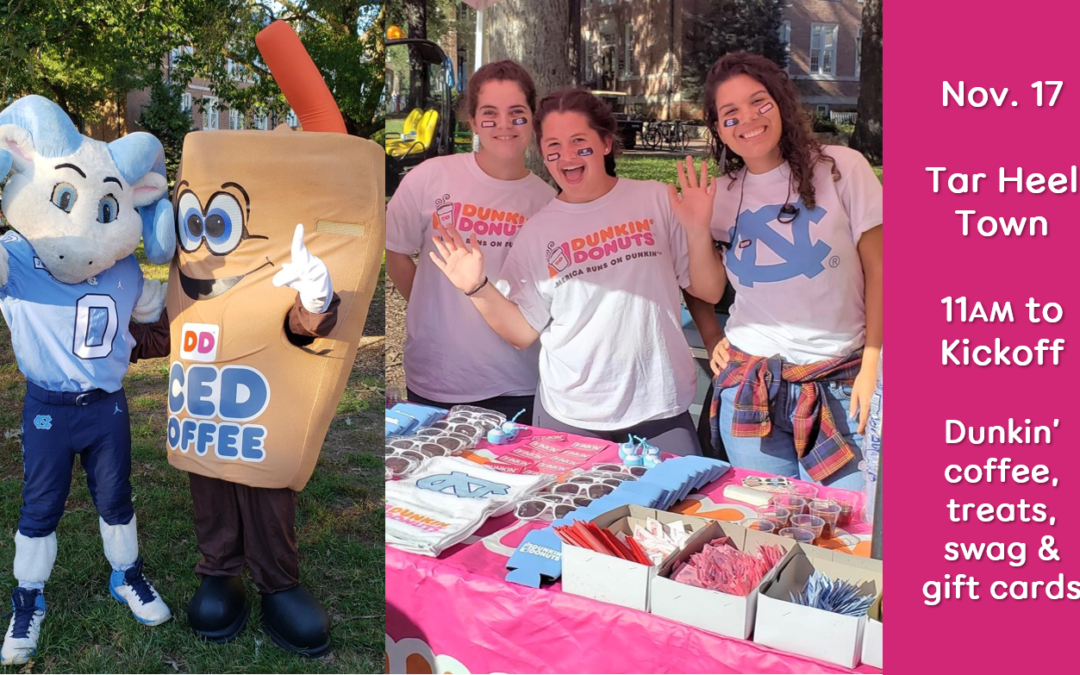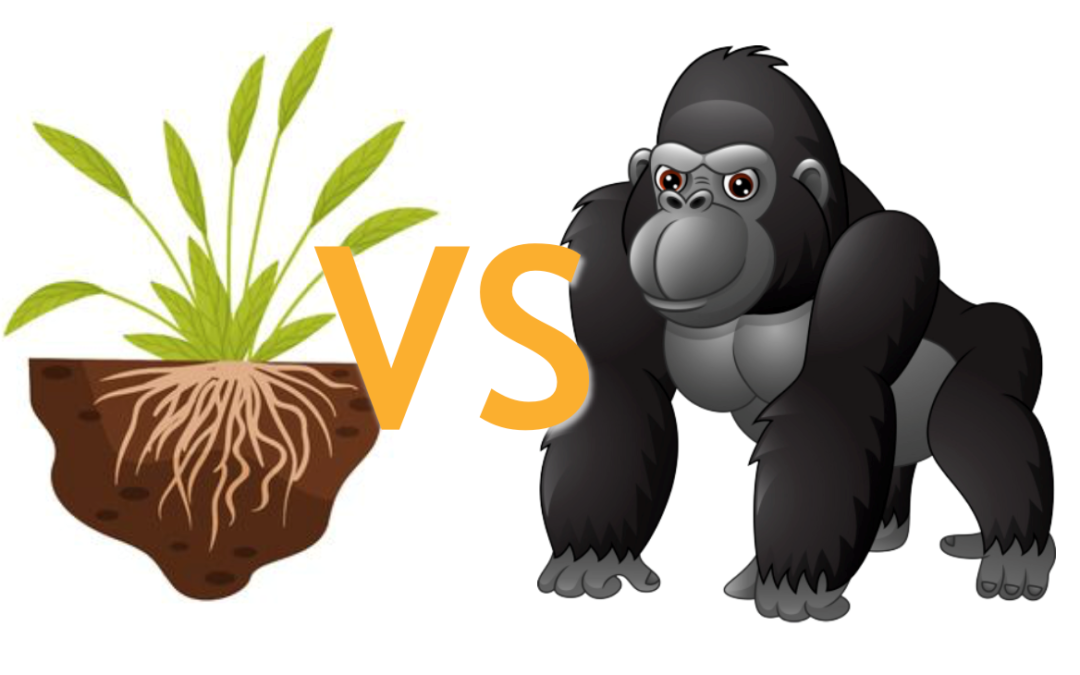
Blog
The media pitch is an essential medium within the public relations (PR) industry. A successful pitch can benefit any PR agency and the organizations they are working for. However, developing a pitch that sticks is no easy task. Because pitching is about building relationships, bringing consistent, relevant, timely information to your target journalist makes all the difference.
Here are some dos and don’ts to consider when pitching your next press release to the media:
Do:
- Remember: Quality over quantity. Keeping your message concise, with the most important information available first, will help journalists absorb and assess information more efficiently. Reports show the average reporter or editor spends just 5 seconds reading a news release – so keep your pitch, and corresponding press release, as succinct as possible. When it comes to engaging with the reporter, focus on anticipating their questions with quick, verified answers at the ready, and always offer an additional spokesperson or subject-matter expert for further discussion in an interview.
- Edit and keep editing. When it comes to writing both a pitch and press release, it never hurts to have multiple sets of eyes reviewing before you hit ‘send’. Even the shortest emails can be easy to flub! Checking for grammar, spelling, and accuracy is an easy way to safeguard against a missed opportunity to get your story covered.
- Make it personal. The last thing that any journalist wants in their inbox is another mass-generated email. Although this is a quick and easy way to distribute release information, it can lack the impact that a personal ‘note’ would bring. Take the extra time to personally share your information to the journalists you know by name, and with whom you have a working relationship with first. Where available, reference a commonality or anecdote referencing your personal or professional connection in the intro of your email.
Don’t:
- Choose the wrong audience. Knowing the audience your release is directed toward is a guiding principle of every press outreach strategy. Not every writer is going to find your release to be in line with their interest and knowledge. Spend some time figuring out who will consider telling your story by knowing what subjects they often cover.
- Release at the wrong time. Timing is everything when it comes to distributing your press release. Sending it out on a Friday or close to a holiday significantly lowers the prospect of coverage. And, journalists are often overwhelmed with a barrage of emails on Mondays. So stick to the middle of the week: According to research, Tuesdays, Wednesdays, and Thursdays are the best days to send press releases.
- Forget to do your research. Especially for news announcing a new product or initiative, sourcing is crucial. Omitting opportunities to hyperlink, fact-check, or provide counter-points ahead of anticipated questions leaves the journalist wanting more – and they don’t have time to do the work for you. Credibility is everything!

Blog
The Holidays are almost here. For many organizations, this time of year brings a sense of urgency to convert followers to customers, close deals, and meet yearly financial goals via the holiday spending surge.
But with consumers expecting more from the brands they buy from, it’s increasingly important for companies to be generous – and project that generosity to audiences in an authentic way. In this season of giving, here are 4 ways brands can leverage their platforms to give back:
- Let your consumers inspire you. Don’t know where to start? The beauty of two-way, digital platforms like those on social media is that they’re an open field for feedback. Of course, it’s a double-edged sword, and the feedback isn’t always worth highlighting; but generally, followers are more open to feel-good engagement this time of year. One way to spark their interest might be to ask in a post how they enjoy giving back to their community; select your favorite responses, feature them, and reward those responders in some other way besides the feature. Voila! Easiest content generator ever – and you just might inspire a good deed or two in the process.
- Tell stories from the inside out. There’s a reason storytelling campaigns inspire audiences to act. Seeing real people share their real perspectives offers followers a glimpse into something audiences can relate to or empathize with – and for brands, that human perspective can build trust and affinity among audiences, taking them from followers to consumers. Companies should leverage this feel-good time of year to tell the untold stories about the everyday heroes they know best: their employees. Seek out internal input on who to feature from your team members and then let communications teams work their magic by crafting a thoughtful portrait of each chosen employee. Your work family will love it, and your audiences will, too.
- Work towards a giving goal together. Determine a cause or initiative you’d like to raise money or resources for by the end of the year, and load your digital channels up with tools that empower audiences to help reach your goal. Kick off the campaign sometime before Thanksgiving with a big splash announcement to followers, inciting them to share about it on their own channels, and consider an in-kind incentive for those who contribute toward the cause. Ideally, you’ll support a cause that’s linked to a follower base of its own, which presents mutually beneficial, ripe opportunities to cross-promote and glean followers via the campaign. Keep the campaign love going through the beginning of the New Year and, if able, couple your digital tools with community relations or service-oriented events hosted by your organization. Bonus: Media has an extra appetite for these types of events this time of year, so you might get some coverage out of it. Everyone wins!
- Give the gift of better, best practices. Use the last month of the year to announce one or more best practices you plan to implement in the New Year. This can be anything from being more sustainable, to donating a certain percentage of profits on a particular item, to offering employees paid volunteer hours as part of their benefits package. Whatever the announcement, use the timing of the holiday season to be as loud and proud about this as you would any other business-related win or achievement. When you’re happy to give back, your audiences will be happy to keep on coming back to you.
Show us some holiday season love by following along with our PIVOT PR team! Find us on Instagram and keep up with our blogs throughout the holidays and beyond.

Blog
As brands compete to stand out in today’s noisy internet age, many companies are looking for that silver-bullet strategy to make products and services stick with customers. Often, this can feel like a futile exercise, especially as customers’ social media feeds continue to expand with next-best-things at every click.
Event activations, however, can change that game! Events are a great way to not only build brand awareness, but also nurture real business-to-consumer relationships by directly engaging with target audiences. The goal is to give consumers a good taste of the brand’s personality and reputation, leaving a lasting impression on consumers that only an event experience can provide. Activations can take many different approaches depending on your brand and consumer audience – but here are four tips for making yours a success:
- Capitalize on ways to get #trending. Leveraging specific trends during event activations allows the brand to reach larger audiences by taking the event online. In 2016, Sonic used Coachella, a popular music and arts festival, to promote their square milkshakes all over social media. Coachella attendees were given a milkshake for free if they posted “#squareshakes” on their Instagram. Boom… instant impact.
- Partner with influencers/other brands. Partnering with influencers or other companies can boost the credibility of products and services showcased at an event. This is usually a win-win situation for all parties involved (a little extra attention for you both!) and nets an overall bigger audience.
- Make your event interactive. Any event that offers its audience a chance to be interactive, especially in a unique and creative way, has an instant advantage. Taking the event from something the audience observes to something they’re a part of can leave that desirable long-lasting impression on the customer. So, get creative! Consider how attendees can step inside the event experience – and leave with a behind-the-scenes look at the brand that resonates.
- Give your audience what they want. Consider the location of your event, and what its usual traffic looks like. Why are bystanders or attendees there in the first place, and how can your brand enhance that experience? In 2017, Nordstrom set up special shops that sold experiences to their consumers. These shops provided services such as makeovers, styling, and samples. Nordstrom knew exactly who their audience was: Women who appreciate fashion and beauty. With this information in mind, they were able to provide their consumers with exactly what they were looking for – and leave them with a lasting impression of their brand.
More than anything, your event must be authentic to your company! Through active listening and creative storytelling in the strategy phase, you can create an overall delightful event experience that will humanize your brand and forge a positive connection with consumers in years to come. At PIVOT PR, we’re pros at all of the above. Give us a shout to chat about how we can help with your event strategy today.

Blog
You’ve got a story to tell, and an audience to reach. So what’s the most efficient way to connect the two? Between print, social media, and broadcast channels, myriad platforms are available to help share your message with audiences. Landing a television spot, specifically, can be a storytelling silver bullet for individuals, organizations, and businesses. If you’ve got your eyes on a television interview (now or perhaps in the future), we’ve developed four guidelines to help you “nail the spot”:
- Perfect the pitch – As with all media relations, that first touch point with a media outlet can make or break your chance at securing an interview. TV producers, in particular, are inundated with requests all day – and unlike print journalists with certain beats, they’re generally open to any story that might resonate with their viewers. For this reason, a little homework can go a long way to help your pitch stand out from the pack. Tailoring a subject line with a reference to a recently-aired story, using the opening line to highlight a personal tidbit or connection related to the producer or show, or teasing a half-baked segment are just a few creative ways to do this.
- Bring only the essentials – So, your pitch piqued the interest of a TV producer! It’s time to start planning your segment. Because television is fast-paced and most interviews are allotted less than five minutes, it’s vitally important to orient every talking point around your story’s call-to-action. In other words, every anecdote, prepared answer, or supportive detail about your story should always pivot to the next step. Write your talking points down, and practice aloud how you’ll weave the call-to-action throughout the conversation. Props and additional guests can also be valuable supportive elements for your story. Let them work for you by supplying
- Keep story first, teller second – While most programs are formatted to make interviews feel like an informal conversation, TV exposure is far too valuable to let a conversation truly meander. This can be a challenge for big personalities or those who feel uncomfortable with “selling” or “pushing” something to audiences. As unnatural as it might feel, always fight the temptation to venture into subject matter (at least, for too long!) that’s not related to exactly what you’re on-air to communicate. Your bio might be what gets the audience to show up, but the story you tell is what they will – or won’t – remember. Stay focused.
- Lock in the logistics – Before, during, and after your television interview, don’t let details get lost… and then in your way. Keeping track of contact information for everyone on your TV pitch-list, including response status, booking dates, and studio arrival times and locations, will prevent scheduling snafus like double-booking or worse, late or missed interviews. As with most other things on your agenda, it’s a good idea to create calendar appointments with all day-of information once you’ve confirmed your spot. Putting a bow on the details ahead of time frees up more mental space for you to plan, practice, and nail that interview.
These are just a few of the many ways PIVOT helps our partners be great on-air storytellers. Keep up with our media relations and other PR tips on our blog. And, call us when you’re ready to make that pitch!

Blog
In public relations, certain terms are hard to distinguish from each other due to a strong similarity. For example, public relations, or “PR”, is often conflated with related terms like marketing and advertising. But such practice areas can work compatibly with one another, while still serving a unique role. The same goes for grassroots marketing and guerilla marketing – two terms that are often confused for the same thing. Understanding the difference between the two is helpful, especially for those interested in implementing either of these tactics within a business. Today, we’re drawing the distinction for you – so you can be confident in the next step.
Let’s start by defining grassroots marketing. Grassroots marketing targets a small audience in hopes that the specified chosen group of people spread the intended message to larger audiences. One of the best ways to encourage others to share a brand’s message is through emotional triggers. In 2013, Canadian airline Westjet targeted a group of passengers all traveling on the same flight, using social media to individually ask them what they wanted for Christmas. While the passengers were airborne, Westjet rushed to buy the gifts that the passengers asked for. Once the plane landed, Westjet placed the gifts on the baggage claim carousel for the passengers to retrieve. The campaign encouraged people to share their stories through social media, the place where the company originated its interaction with the passenger-customers.
Conversely, guerilla marketing is best known for unconventional and unique tactics that raise brand awareness by targeting a larger audience. Guerilla marketing stands out because of the way that it doesn’t interrupt its audience. It catches its audience somewhat by surprise, appearing in normal day-to-day life. In 2009, Bounty showcased the absorbency of their paper towels by placing two large spills from a coffee cup and a popsicle in New York and Los Angeles. The brand executed this by advertising itself in a unique and eye-catching way while also providing a solution to the “mess.” Note that this campaign did not target a specific audience but instead was designed to reach as many people as possible through social sharing.
Now that the two types of marketing have been defined, let’s highlight the key difference between the two. Grassroots marketing starts by targeting a very specific and intentional demographic or audience. Guerilla marketing is designed to target and reach a larger audience. Distinguishing these two terms all comes down to the size and intent of audience. However, both types of marketing can employ the same strategies and techniques. And since grassroots and guerilla marketing both aim to increase sales and raise brand awareness, both have the potential to generate effective marketing results within any business.

Blog
Eric and Allison recently had an opportunity to sit down with Hannah Smoot, one of the newest reporters on staff at the Charlotte Observer. Hannah shared all about her background in journalism, thoughts on the future of the newspaper industry, and some fun stories she’s covered in the past. Check it out!
Tell us about yourself… where are you from, and what brought you to Charlotte?
I grew up in Raleigh and went to college at UNC – Chapel Hill. When I graduated in 2017, I went straight to Rock Hill for a job with the Rock Hill Herald. I worked down there for a couple of years for the same company that owns the Charlotte Observer, so I had been working closely with some of the editors and reporters in Charlotte. I really loved living in Charlotte and being part of the community, so I wanted to get up here as soon as possible. When this job opened up, I just had to apply for it and had to get into Charlotte… so its been really great being able to live and work in the same place!
What beats did you focus in Rock Hill, and what will you be covering here?
In Rock Hill, I was focused mostly on politics and business. Now here in Charlotte, I’m on the business desk focusing on healthcare and aviation, and a little bit of retail as well. Its definitely a lot different than what I was doing… but the reason I was so comfortable making the shift is because I always liked taking hard to understand topics and translating it to how it affects people in their everyday lives. I think there’s a lot of opportunities to do that in all of these beats, especially in Charlotte.
So now that you’re here in Charlotte… what does your day to day look like?
I’m still figuring that out! It’s still new, so it’s a lot of reaching out to different PR people or spokespeople and meeting them. Right now, I’m really focused on building relationships in the community. I’m planning on being in Charlotte for quite a while, so I wanted to take the time to build up those relationships and get to know people.
Knowing that the media landscape has changed dramatically in recent years, what do you think the future of the traditional newspaper industry looks like?
Of course, I think digital is going to be so important… we’ve already seen that in other industries. I’ve seen this in covering retail, since this is something that retailers are focused on. People are going online to shop… people are going online to read our news… people are going online to do everything. So I think it’s going to be very important for us to figure out how we can get our news to people while also building a community online. For years, people would sit down at the kitchen table and read the newspaper on a Sunday morning, and we have to learn how to create that same effect online.
What’s one of the most memorable stories you’ve worked on during your career as a journalist?
There’s been a couple of interesting ones… One of my favorite that I really enjoyed was actually one of my first stories in Rock Hill. I got to report on the BMX World Championships that was held in Rock Hill a couple years ago. So as a part of that, I got to go and ride a BMX bike down the track… which is TERRIFYING, but also a lot of fun! I did wipe out (my editor told me before I left that I wasn’t allowed to break anything ?) I did sprain my ankle, but otherwise it was a lot fun. Personally, I really enjoy those stories when I can go out, get hands-on, and try something new.





